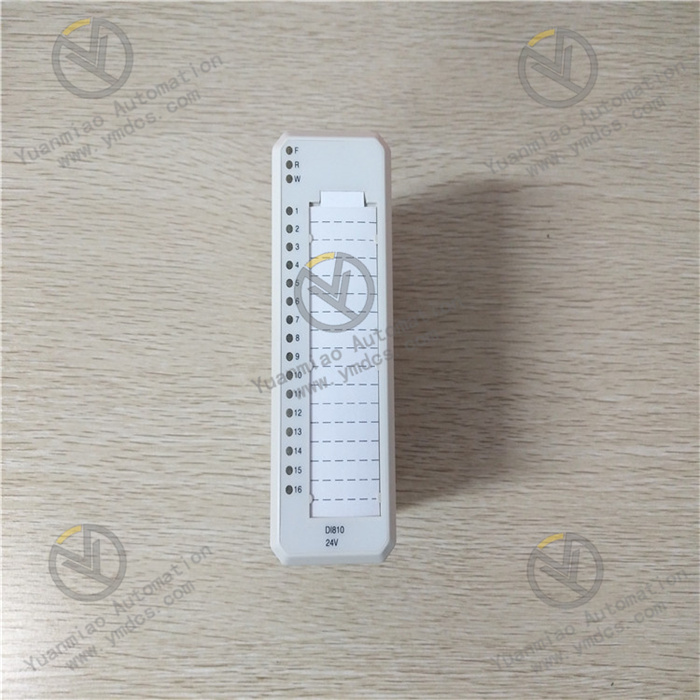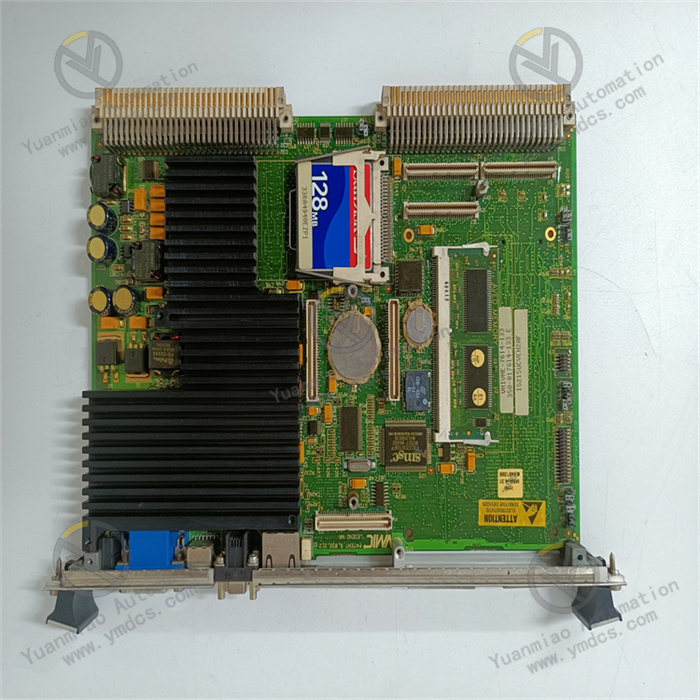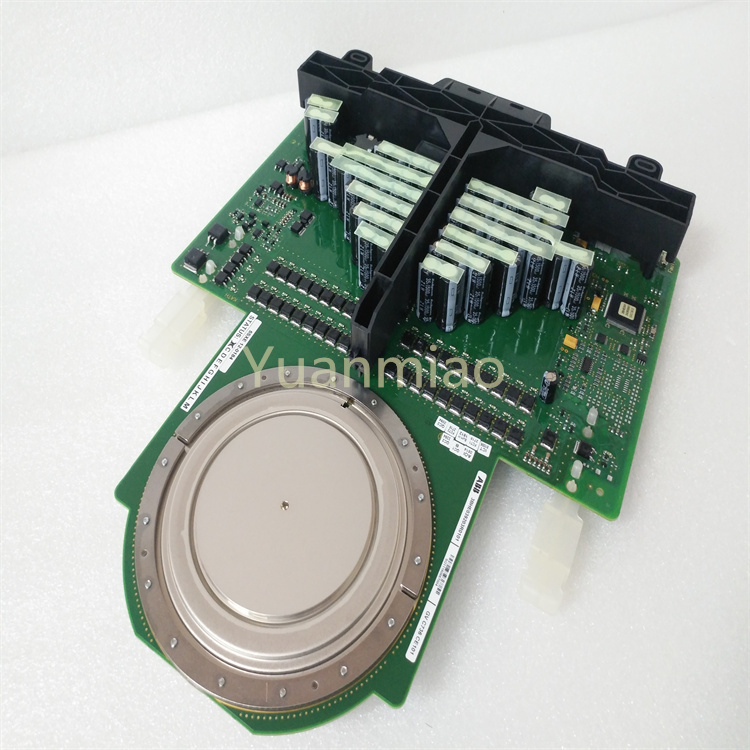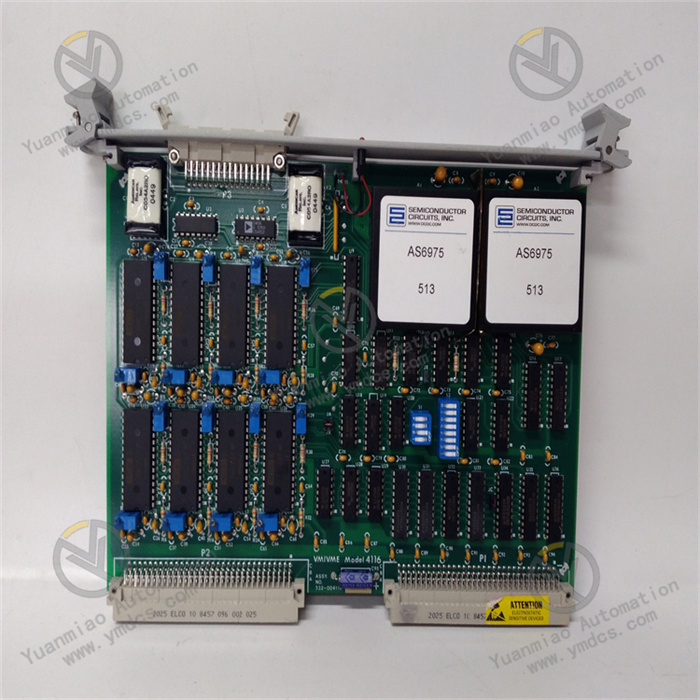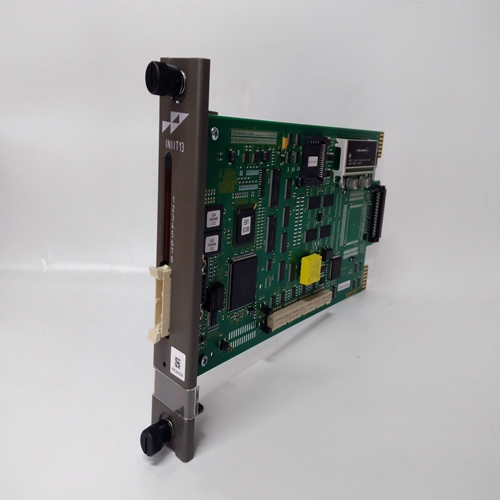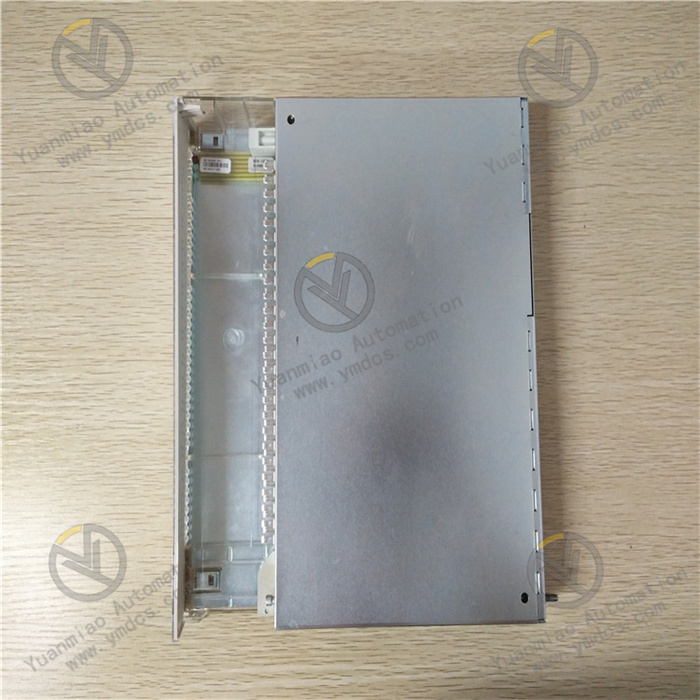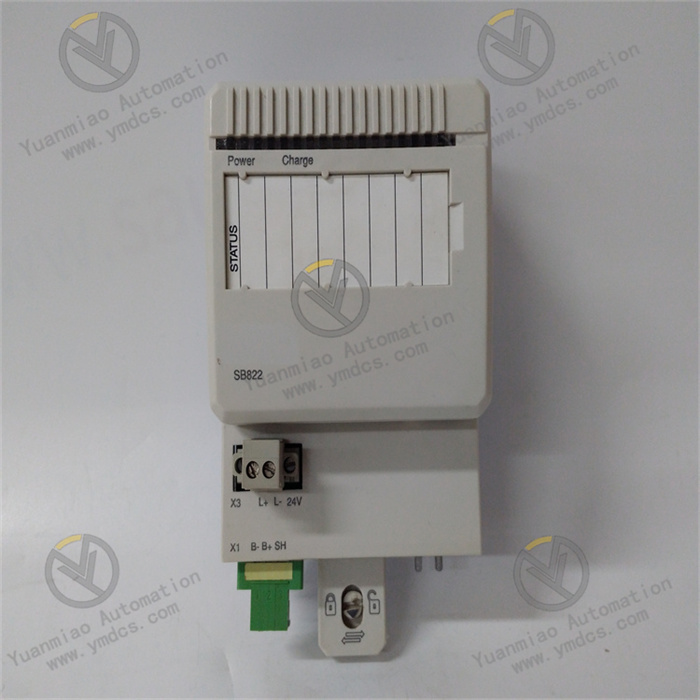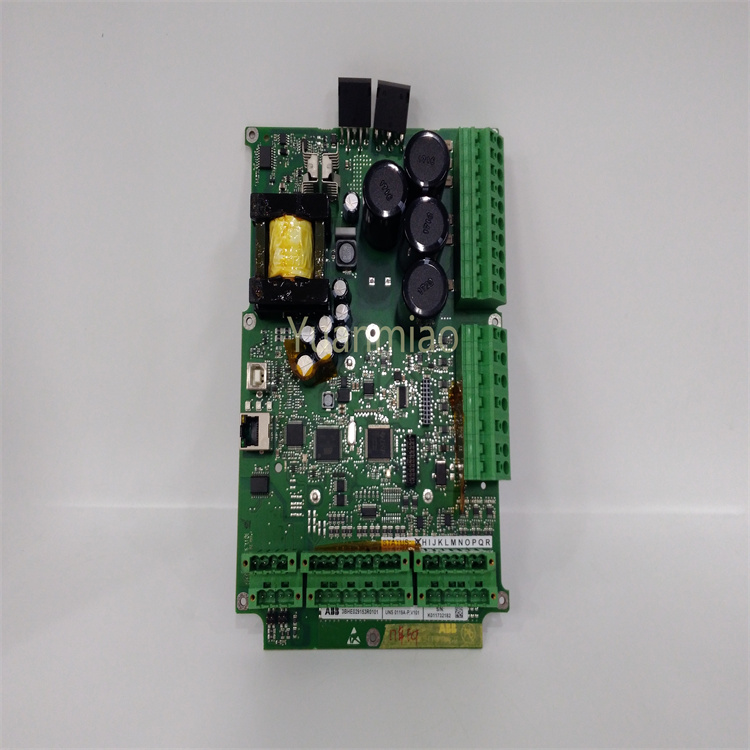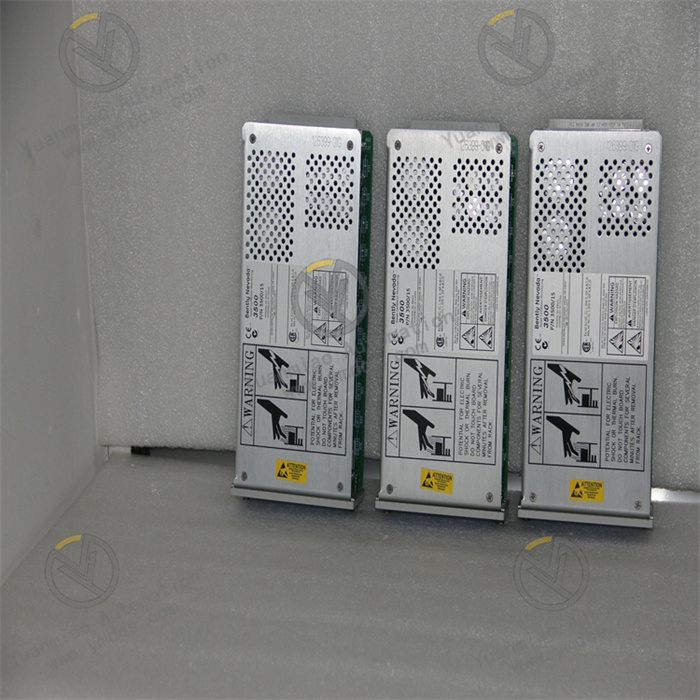Description
GE WEA13-13 2508-21001
I. Product Overview
In terms of hardware architecture design, the module adopts a compact and optimized layout, which can cleverly adapt to the limited space environment in various control cabinets and facilitate convenient combined installation with other equipment. Its shell is carefully made of high-strength industrial-grade materials, which not only has excellent anti-vibration and anti-impact performance, but also has good dust-proof characteristics. This enables the module to operate stably for a long time in complex and harsh industrial environments such as dusty and frequently vibrating ones, effectively protecting internal precision circuit components, greatly extending the service life of the module and ensuring operational reliability.
In terms of functional positioning, the GE WEA13-13 2508-21001 module focuses on the accurate processing of complex signals in industrial sites and the efficient output of control commands for various equipment. It can accurately receive signals from various sensors such as temperature sensors, pressure sensors and flow sensors, convert physical quantities into electrical signals, and then perform subsequent processing and analysis. At the same time, according to the preset complex control logic, it quickly and accurately sends control commands to the executing agency to realize the refined and precise regulation of industrial equipment. In the entire industrial automation system, it is like a bridge, closely connecting the on-site perception layer and the control layer to ensure the smooth operation of the system.
II. Performance Parameters
Operating voltage: Adapt to industrial standard DC voltage input, with a common specification of 24V DC. This voltage specification is highly matched with most sensors, actuators and power supply systems widely used in industrial sites, which greatly facilitates system integration. The stable 24V DC voltage input can ensure that the module stably obtains the working power supply, laying a solid foundation for the normal and efficient operation of various functions.
Input and output characteristics: Equipped with a specific number of input and output channels, and the specific number needs to refer to the detailed product manual. The input channel shows strong compatibility and can easily accept various types of signals such as 4-20mA current signals and 0-10V voltage signals, fully meeting the diverse signal access needs of different sensors. The output channel has a certain degree of driving capacity and can directly drive small relays, solenoid valves and other executive components. Its output current is usually in the range of 1A-5A, but the specific value will vary according to different models.
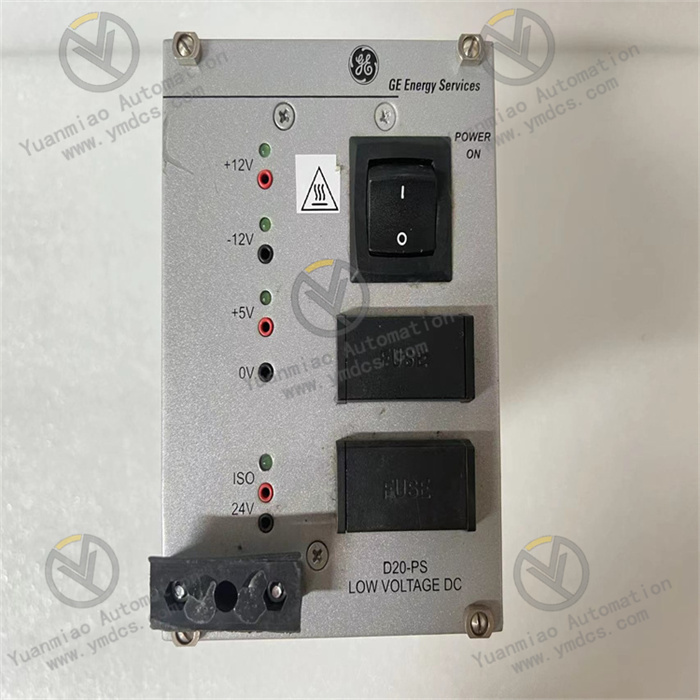
(2) Environmental Adaptability
Operating temperature: It has a wide operating temperature range and can run stably in the temperature range of -20℃ to +60℃. This feature enables it to perfectly adapt to the common large temperature changes in industrial production workshops. Whether in cold winter or hot summer, it can always maintain stable performance, ensuring that the control process is not affected by temperature fluctuations at all.
Operating temperature: It has a wide operating temperature range and can run stably in the temperature range of -20℃ to +60℃. This feature enables it to perfectly adapt to the common large temperature changes in industrial production workshops. Whether in cold winter or hot summer, it can always maintain stable performance, ensuring that the control process is not affected by temperature fluctuations at all.
Relative humidity: The module can still work normally in an environment with a relative humidity of 5%-95% (non-condensing). This makes it particularly suitable for humid industrial places such as food processing workshops and water treatment plants, effectively avoiding circuit short circuits, component corrosion and other faults caused by humidity problems, and strongly ensuring the long-term reliable operation of the module.
Anti-electromagnetic interference: It strictly complies with industrial-grade electromagnetic compatibility standards and has strong anti-electromagnetic interference ability. In industrial sites, motors, frequency converters, high-voltage equipment, etc. will generate strong electromagnetic interference, and this module can effectively resist these interferences, ensure the accuracy of signal transmission and the reliable execution of control commands, avoid misoperations caused by interference, and maintain stable operation of the system.
(3) Response Speed
The signal processing and response speed of the module are excellent, and the response time of the input signal is usually at the millisecond level. For specific values, please refer to the product manual. Such a fast response speed enables it to quickly capture the subtle changes of on-site signals and output corresponding precise control commands in a timely manner, which fully meets the strict real-time requirements of industrial automation systems and ensures timely and accurate regulation of equipment.
The signal processing and response speed of the module are excellent, and the response time of the input signal is usually at the millisecond level. For specific values, please refer to the product manual. Such a fast response speed enables it to quickly capture the subtle changes of on-site signals and output corresponding precise control commands in a timely manner, which fully meets the strict real-time requirements of industrial automation systems and ensures timely and accurate regulation of equipment.
III. Functional Characteristics
Precise filtering and amplification: It has extremely precise signal processing capability, and can carry out a series of complex processing operations such as filtering, amplification and conversion for the input analog or digital signals. Through efficient filtering algorithms, it can effectively remove noise interference in the signal, greatly improve the accuracy and stability of the signal, and provide real and reliable original data for the subsequent control system. For example, when collecting signals from pressure sensors, it can accurately filter out interference signals caused by pipeline vibration, ensuring that the pressure data truly reflects the actual working conditions.
Range calibration and linearization: It supports detailed range calibration and linearization processing of input signals. Users can set targeted parameters for the module according to the unique characteristics of the actual sensor, so as to establish an accurate corresponding relationship between the collected signal and the actual physical quantity. This function significantly improves the measurement accuracy and can fully meet the strict requirements of high-precision control scenarios.
(2) Control Logic Execution
Programmable control: With built-in programmable control logic, users can flexibly program and configure parameters for the module with the help of special programming software, so as to realize personalized and customized control strategies. For example, according to the deviation between the input temperature signal and the preset set value, the output control quantity can be automatically and intelligently adjusted to realize efficient closed-loop control of heating equipment, so that the temperature is always stable within the set range.
Programmable control: With built-in programmable control logic, users can flexibly program and configure parameters for the module with the help of special programming software, so as to realize personalized and customized control strategies. For example, according to the deviation between the input temperature signal and the preset set value, the output control quantity can be automatically and intelligently adjusted to realize efficient closed-loop control of heating equipment, so that the temperature is always stable within the set range.
Linkage control: It supports collaborative linkage control with various other control equipment. Through the communication interface, the module can receive the instructions from the superior control system in real time and strictly execute the corresponding operation actions in accordance with the instructions. At the same time, it will also feed back its own operating status and collected data to the superior system in a timely manner, so as to realize the collaborative work of all links in the entire industrial automation system and improve the overall operating efficiency.
(3) Status Monitoring and Diagnosis
Real-time status monitoring: It has a complete status monitoring function, which can monitor the operating status of the module itself in real time and dynamically, including key information such as power supply voltage and communication status. And through intuitive indicators or convenient communication methods, it clearly indicates the status, facilitating operators to understand the working condition of the module at any time and intuitively.
Real-time status monitoring: It has a complete status monitoring function, which can monitor the operating status of the module itself in real time and dynamically, including key information such as power supply voltage and communication status. And through intuitive indicators or convenient communication methods, it clearly indicates the status, facilitating operators to understand the working condition of the module at any time and intuitively.
Self-diagnosis and alarm: It has a certain degree of self-diagnosis ability. When the module encounters faults or abnormal conditions, such as input signal overrun and communication interruption, it can quickly and timely send out alarm signals and record fault information in detail. This function greatly facilitates maintenance personnel to quickly locate and repair faults, effectively shortens system downtime and reduces production losses.


